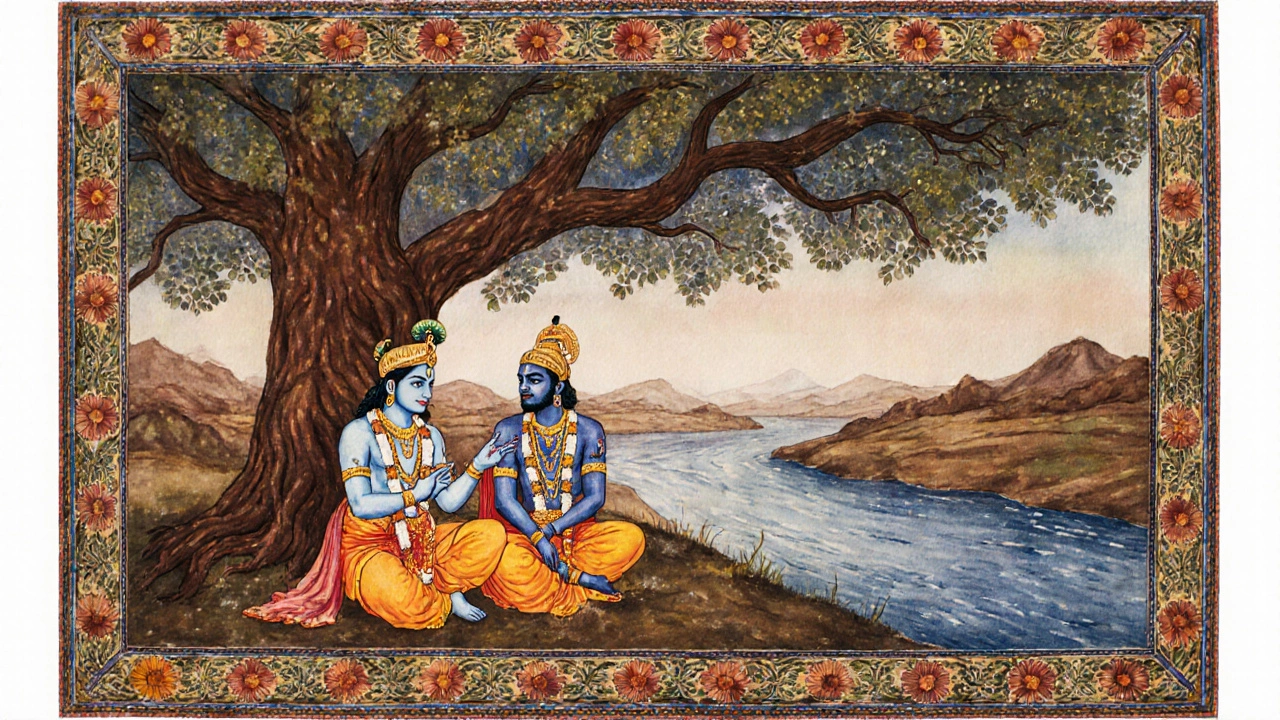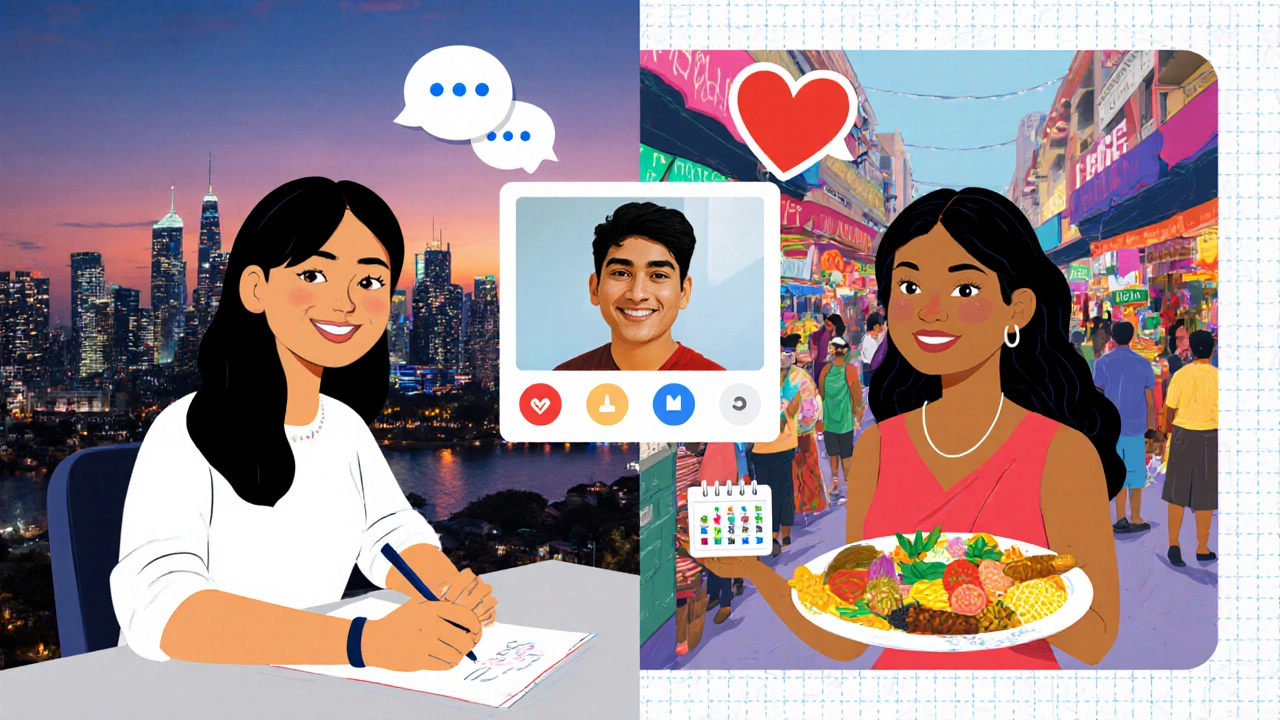What Real Friendship Means - Definition, Signs, and How to Build It
 Oct, 17 2025
Oct, 17 2025
When people ask, what is real friendship? they’re really hunting for a clear, no‑fluff answer that separates genuine bonds from casual acquaintances. Below we break down the core ingredients, cultural twists, and everyday actions that turn a nice‑to‑know person into a lifelong confidante.
Understanding Friendship at Its Core
Friendship is a mutual relationship built on trust, affection, and shared experiences that supports emotional well‑being. It’s more than hanging out on weekends; it’s a two‑way street where each person gives and receives, often without keeping score. Real friendship shows up when you feel safe to be yourself, flaws and all, and when the bond survives both celebrations and setbacks.
The Pillars of Real Friendship
Five qualities consistently pop up in psychology studies and in the words of seasoned friends:
- Trust the belief that your friend will keep confidences and act in your best interest. When you can share a secret without fearing gossip, you’re on solid ground.
- Loyalty standing by each other through thick and thin, even when it’s inconvenient. A loyal friend shows up for the hospital visit, the job interview, or the midnight heartbreak call.
- Empathy the ability to feel and understand what the other person is experiencing. It’s the difference between a "I feel bad for you" and a "I feel with you".
- Communication open, honest, and respectful dialogue that lets both parties express needs and concerns. Real friends talk about the good, the bad, and the awkward.
- Shared experiences moments-big or small-that create a common narrative and deepen connection. From road trips to late‑night study sessions, these memories become the glue.
These pillars aren’t isolated; they reinforce each other. Trust enables honest communication, which fuels empathy, and so on.
Indian Perspectives on Real Friendship
India’s rich literary tradition offers countless snapshots of what true friendship looks like. Classic verses from the Mahabharata describe the bond between Krishna and Arjuna as a mix of mentorship and companionship, emphasizing devotion and selfless support. Modern Indian poets often echo the same sentiment: “Friendship is the silent agreement to stay side‑by‑side, even when the world turns away.”
Here are three popular friendship quotes India lovers share on WhatsApp and Instagram:
- “सच्ची दोस्ती वो नहीं जो साथ में रहती है, बल्कि वो है जो दूर रहने पर भी दिल को छू लेती है।” (True friendship isn’t about being together; it’s about touching the heart even when apart.)
- “दोस्त वह नहीं जो सूरत से पहचान जाए, दोस्त वह है जो समझे दिल की भाषा।” (A friend isn’t recognized by appearance, but by understanding the language of the heart.)
- “जिंदगी में अगर दो लोग साथ हों, तो एक दोस्त ही काफी है, क्योंकि वह हर दर्द को हँसी में बदल देता है।” (If two people walk together in life, one friend is enough; they turn pain into laughter.)
These sayings underline the same five pillars we listed earlier, showing that cultural backdrop doesn’t change the anatomy of real friendship-it merely wraps it in local flavor.

How to Nurture Real Friendship: Practical Steps
- Show up consistently. Small actions, like a quick "thinking of you" text, signal reliability.
- Listen actively. Mirror back feelings (“It sounds like you’re frustrated”) rather than jumping to solutions.
- Share vulnerability. Admit fears or mistakes; it invites reciprocal honesty.
- Give without keeping score. Offer help because you care, not because you expect a favor later.
- Set healthy boundaries. Respect each other’s time, space, and personal values.
- Celebrate milestones. Remember birthdays, promotions, or personal victories; joy multiplied is joy amplified.
Following these habits gradually transforms acquaintances into confidantes. Notice how a simple habit-like meeting for coffee every month-creates a reliable rhythm.
Spotting Superficial vs. Real Friendship
Not every friendly smile hides a deep connection. Here’s a quick side‑by‑side comparison:
| Aspect | Superficial | Real |
|---|---|---|
| Communication | Occasional, surface‑level chats | Frequent, honest, and emotionally honest |
| Support | Only when convenient | Shows up during crises and celebrations alike |
| Trust | Limited, guarded | Deep, unconditional confidence in each other |
| Boundaries | Often ignored or violated unintentionally | Respectfully negotiated and honored |
| Longevity | Fades after major life changes | Adapts and endures over years |
If most rows lean toward the “Real” column, you’ve likely found a true friend.
Real‑Life Illustrations
Consider Maya, a Melbourne‑based graphic designer who moved to Delhi for work. She met Priya at a coworking space; their first conversation was about favorite street foods. Over six months, Maya faced a family illness back home. Priya flew out, helped coordinate care, and sent daily encouragements. When Maya finally returned to Australia, they kept a weekly video call and planned a joint art exhibition. Their bond survived distance, culture shock, and hardship-classic proof of real friendship.
History offers another example: the friendship between Mahatma Gandhi and C.F.Bishop, a British official who later advocated for Indian independence. Despite being on opposite sides of a colonial power dynamic, they exchanged letters reflecting profound respect, trust, and shared moral values-showcasing how friendship can transcend politics.

Quick Checklist: Are You in a Real Friendship?
- You can share a secret without fear.
- Both parties make an effort to stay connected.
- Disagreements are resolved through calm conversation, not silence.
- You feel uplifted after spending time together.
- Boundaries are respected, and personal growth is encouraged.
Check off most items? Congratulations-you’ve likely found a real friend.
Final Thoughts
Real friendship isn’t a vague, feel‑good concept. It’s a measurable set of behaviors-trust, loyalty, empathy, communication, and shared experiences-wrapped in cultural stories and daily actions. By understanding the pillars, recognizing the signs, and actively nurturing the bond, you can both find and keep friends who truly matter.
Frequently Asked Questions
How do I know if my friend is genuine?
Look for consistent support in both good and bad times, willingness to listen without judgment, and mutual respect for boundaries. If these show up repeatedly, you’re likely dealing with a genuine friend.
Can a friendship survive long distance?
Yes. Regular communication, shared hobbies (like virtual game nights), and occasional visits keep the emotional connection alive. Trust and empathy become even more crucial when you’re apart.
What are common signs of a toxic friendship?
Frequent criticism, one‑sided effort, feeling drained after interactions, and disregard for your boundaries-all point to toxicity. It’s healthier to set limits or step back.
How can I become a better friend?
Practice active listening, celebrate your friend's successes, be reliable, and share your own vulnerabilities. Small, consistent actions build trust over time.
Do cultural differences affect friendship?
Cultural backgrounds shape communication styles and expectations, but core pillars-trust, loyalty, empathy-remain universal. Open dialogue about differences strengthens cross‑cultural bonds.